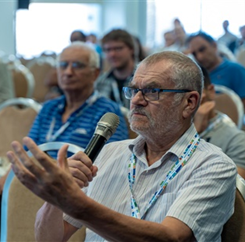Education
Ian Jenkinson was born 1948 in Wales, UK, but raised until 12 years old in Jersey, a British island off the French coast, then on the South coast of England. For his 15th birthday Ian received a copy of A.C. Hardy (1958, The Open Sea: The World of Plankton). To study plankton Ian went to Bangor University, Wales, and was inspired particularly by algologist, Eifion Jones. After an M.Sc. in Oceanography at Southampton University, mentored by John Raymont, Peter Lockwood and Peter LeB. Williams, Ian received a French Government Scholarship at the Institute of Marine Biology, Arcachon (University of Bordeaux I, France) to research fouling organisms of oysters with Robert Weill. Ian then got a Ph D at Portaferry Marine Station (Queens University of Belfast, Northern Ireland) with Pat Boaden. His thesis was entitled Water Movement and Plankton in Strangford Lough. Ian was probably the first trained oceanographer to be based in Northern Ireland.
Professional Career
In 1975, Ian moved to University College Galway Ireland, at the Department of Oceanography, led by Brian McK. Bary. There, he created the independent Agency for Consultation and Research in Oceanography (ACRO), which he still runs. In 1984 he moved to the Marine Biology and Ecology Laboratory, University of Nice, France, led by Raymond Vaissière, as assistant professor, and is still based in France. In 1988, he was a researcher at the Alfred- Wegener-Institute, Germany in Victor Smetacek’s team, and in 1995-96 at the Danish Institute for Fisheries and Marine Research (DIFRES), Charlottenlund, under Tomas Kiørboe. A European Commission project on turbulence (1998 to 2001) led to work at the "Anton Dohrn" Zoological Station, in Napoli, Italy in Maurizio Ribera d’Alcalà’s team and at the Mechanical Engineering Department of the Second University of Napoli, Aversa, led by Michele Di Natale. From 2001 to 2004, Ian was Editor in Chief of the Journal of Plankton Research (Oxford University Press), in the footsteps of David Cushing and Tim Wyatt. In 2008, Tsuneo Honjo invited Ian to Kyushu University, Japan, for lecturing and mentoring. From 2010 to 2018 Ian worked in Qingdao, China, at the Institute of Oceanology, as Professor of the Chinese Academy of Sciences (CAS) and as Editor in Chief of the Journal of Oceanology and Limnology (Chinese Society of Limnology and Oceanology and Springer Nature).
Contributions
Ian's work on harmful algal blooms (HABs) started in Ireland, invited to Sherkin Island Private Marine Station by Matt Murphy. Red tides of Karenia mikimotoi were causing faunal mortalities: in the top 2 m of a bloom of a bloom of 0.5 to 2.6 million cells per litre, abundant mm-sized bubbles were present, presumably due supersaturated gas pressure caused by photosynthetic O2 production. The bubbles remained stationary indicating increased viscosity. Ian calculated rheological properties from bubble size, and produced a model that showed that the increased viscosity could suffocate fish without toxins. K. mikimotoi, however, was later shown to produce toxins, which has fuelled discussion about the respective roles of mucus and toxins in toxic action by some harmful algae. Viscoelastic properties of eight dinoflagellate species were published in Nature, and a model of how such rheological properties may modify ocean turbulence at small scales. Studies of the rheological properties of non¬bloom Mediterranean seawater sampled throughout the year, and of North Sea water in HABs of Phaeocystis and Noctiluca confirmed seawater bulk-phase viscosity and elasticity to be related to chlorophyll a content.
In Qingdao, Ian worked with SUN Song and SUN Jun, and formed the International Working Group on bioRheology, nano- and micro¬Fluidics and bioFouling in the Ocean (RheFFO WG); the first hybrid international workshop was held in Qingdao in 2015. F for Foam was later added (RheFFFO). Multi-author papers have been published on: capillary rheology of HAB species and bacteria; effects of ocean surface microlayer rheology, foam stability and the effects of albedo on ocean-atmosphere exchanges in relation to climate influence, especially as modified by algae blooms. In 2023, RheFFFO members have reviewed the possible associations of eDNA with different polymeric material, toxicity and signalling molecules, as well as with rheological properties, mixing and diffusion, in climate control and modification. Data on ocean polymers and seawater rheological properties need to be added to the databases that already contain the occurrence of eDNA and microbial species, especially harmful algae.
HAB activities
Following Ian's pioneering studies of HAB rheology, algal cultures and non-HAB seawater, Ian has worked to show HAB researchers the importance of rheology in the dynamics of phytoplankton life histories, fluxes of matter and energy both within the ocean and across the ocean-atmosphere interface, thus influencing weather and climate.
ISSHA activities
Following Ian's HAB research in Ireland, he was invited by the host, Tomatoshi Okaichi, to the First International Symposium on red Tides, held in 1987 in Takamatsi, Japan. Ian saw it was essential to share data and ideas on HABs internationally, and since then he has participated in most ICHAs and helped push for the founding of ISSHA, particularly at the 1993 ICHA in Nantes. The inaugural meeting of ISSHA took place in 1997 at the Vigo ICHA. Ian was a founder member. He was elected to the ISSHA Council at the Hong Kong ICHA in 2008, and he has since been indispensible in the Statutes Committee, as well as in the Elections and Publications committees. Ian has also pushed to ensure that ISSHA has the rules to work well as an international scientific society maintaining geopolitical balance.
Co-mentoring and senior collaboration
Pat Connors (Sherkin Marine Station, Ireland), Jacqueline O'Mahoney (Galway University Ireland), Xavier Mari (Paris University 6, France), Valerie David (Bordeaux University1, France), Tomoyuki Shikata (Kyushu University, Japan), Yasuhiro Yamasaki (Kyushu University, Japan), Mayalagu Rajkumar (CAS, China and Annamalai University, India), Santosh Karn (CAS, China and Sardar Bhagwan Singh University, India), LI Zhuo (Tongji University, China), Jorge Mardones (University of Tasmania, Australia).
10 Key publications
Jenkinson, I.R. 2023. Plankton genes and extracellular organic substances in the ocean. J.mar. Sci. Eng. 11: 783. doi.: 10.3390/ jmse11040783
Jenkinson, I. R., Berdalet, E., Chin, W.-C., Denis, M., Ding, H. Duan, J. Elias, F., Emri, I. Karn, S.K., Li, Z., Malej, A. Mari, X., Seuront, L., Sun, J., Wyatt, T., Zhang, W., Wurl, O. 2021. The roles of plankton and neuston microbial organic matter in climate regulation. J. Plankton Res. 43! 501-821. doi.: 10.1093/plankt/fbab067
Jenkinson, I.R., Seuront, L, Ding, H., Elias, F. 2018. Biological modification of mechanical properties of the sea surface microlayer, influencing waves, ripples, foam and air-sea fluxes. Elementa Sci. Anthrop., 6: 26. doi.: 10.1525/elementa.283
Jenkinson, I. R., Sun, J. 2014. Drag increase and drag reduction found in phytoplankton and bacterial cultures in laminar flow: Are cell surfaces and EPS producing rheological thickening and a Lotus-leaf Effect? Deep-Sea Res. Part II, 101: 216-230. doi.: 10.1016/ j.dsr2.2013.05.028
Jenkinson, I.R., Sun, J. 2010. Rheological properties of natural waters with regard to plankton thin layers. A short review. J, mar. Sys. 83: 287-297. doi.: 10.1016/j.jm a rsys.2010.04.004
Yamasaki, Y, Shikata, T., Nukata, A., Ichiki, S., Nagasoe, S., Matsubara, T., Shimasaki, Y, Nakao, M., Yamaguchi, K., Oshima, Y, Oda, T. Ito, M., Jenkinson, I.R., Asakawa, M., Honjo, T. 2009. Extracellular polysaccharide protein complexes of a harmful alga mediate the allelopathic control within the phytoplankton community. Int Soc. Microbiol. Eco!. J. 3: 808-817. doi.: 10.1038/ismej.2009.24
Wyatt, T., Jenkinson, I.R. 1997. Notes on Alexandrium population dynamics. J. Plankton Res. 19: 551-575. doi.: 10.1093/plankt/19.5.551 Jenkinson, I.R., Biddanda, B.A. 1995. Bulk¬phase viscoelastic properties of seawater: relationship with plankton components. J. Plankton Res. 17: 2251-2274. doi.: 10.1093/ plan kt/17.12.2251
Jenkinson, I.R., Biddanda, B.A. 1995. Bulk¬phase viscoelastic properties of seawater: relationship with plankton components. J. Plankton Res. 17: 2251-2274. doi.: 10.1093/ plan kt/17.12.2251
Jenkinson, I.R. 1986. Oceanographic implications of non-Newtonian properties found in phytoplankton cultures. Nature 323: 435-437. doi.: 10.1038/323435a0
Jenkinson, I.R., Connors, P.P. 198O.The occurrence of the red-tide organism, Gyrodinium aureolum Hulburt (Dinophyceae) around the south and west of Ireland in August and September, 1979. J. Sherkin Island 1(1): 127-146.

